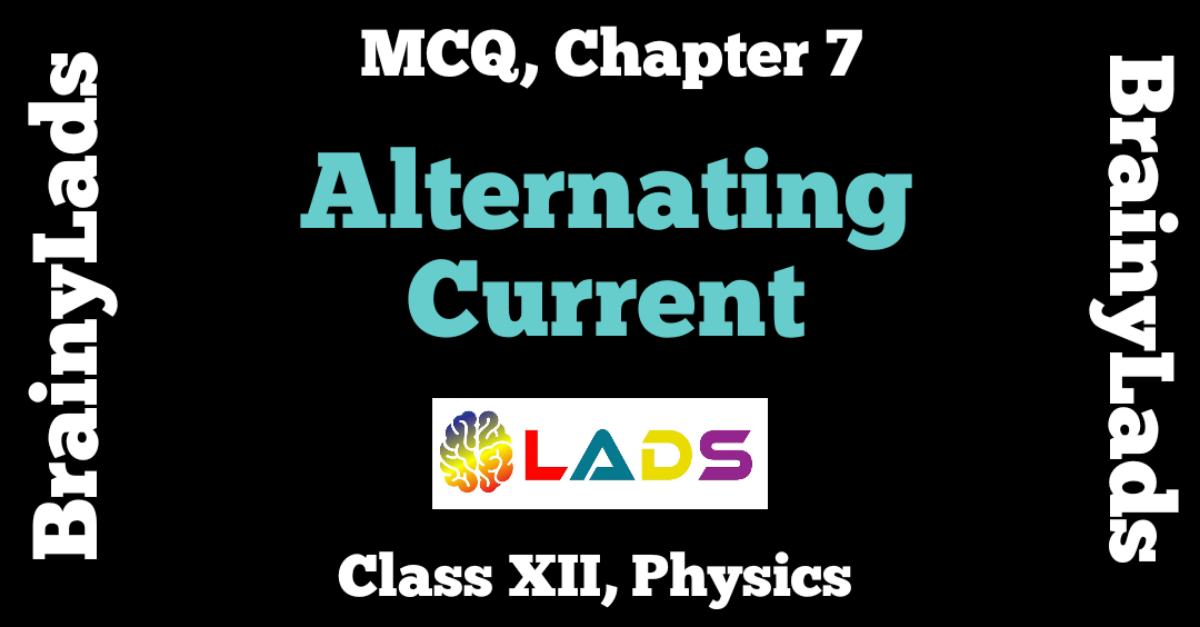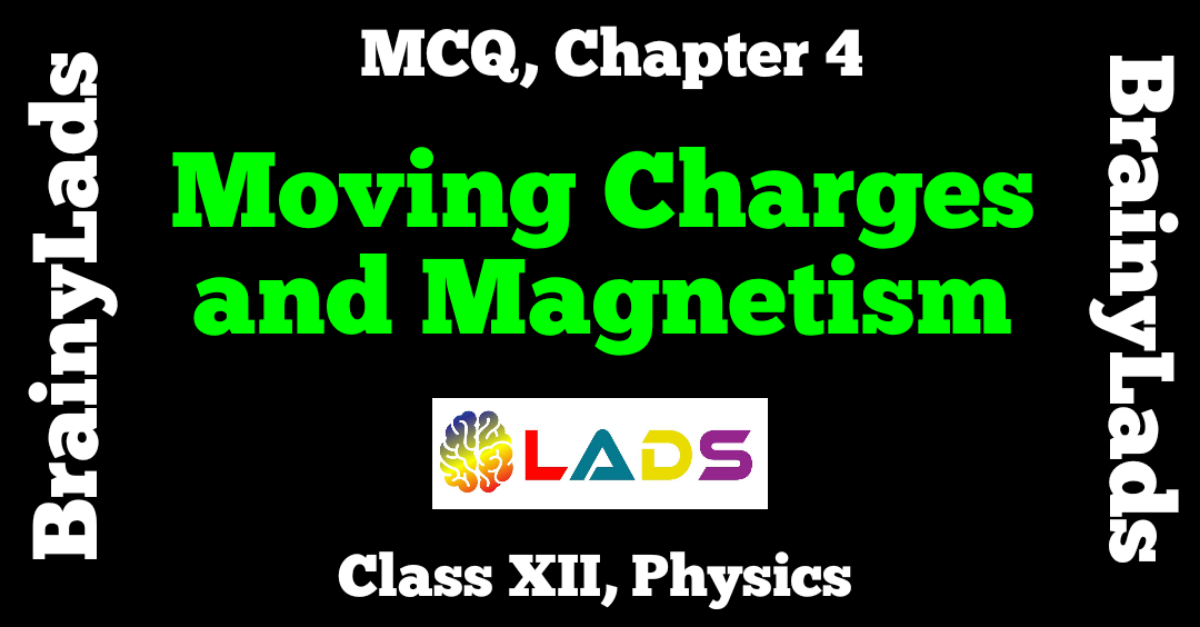MCQ of Electrostatic Potential and Capacitance | Chapter 2 | Physics |
MCQ of Electrostatic Potential and Capacitance, Chapter 2 , Physics , Class 12, CBSE
Question 1: What is the potential at a point due to charge of 5 x 10-7 C located 10 cm away?
- 3.5 x 105 V
- 3.5 x 104 V
- 4.5 x 104 V
- 4.5 x 105 V
Answer: C (4.5 x 104 V )
Question 2: Consider a uniform electric field in the z direction. The potential is a constant
- For any x for a given z
- For any y for a given z
- On the x-y plane for a given z
- All of these
Answer: D (All of these)
Question 3: Which of the following statements is true about the relation between electric field and potential?
- Electric field is in the direction in which the potential decreases
- Magnitude of electric field is given by the change in the magnitude of potential per unit displacement normal to the equipotential surface at that point
- In the region of strong electric field equal potential surfaces are far apart
- Both the statements A and B are correct
Answer: D (Both the statements A and B are correct)
Question 4: A charge Q is placed at the origin. The electric potential due to the charge at a given point in space is V. The work done by an external force in bringing another charge q from infinity upto the point is
- V / q
- Vq
- V + q
- V
Answer: B (Vq)
Question 5: Which is not true for equipotential surface for uniform electric field?
- Equipotential surface is flat
- Two equipotential surface cross each other
- Electric lines are perpendicular to equipotential surface
- Work done is zero
Answer: B ( Two equipotential surface cross each other )
You may also go through other subjects like MCQs of Biology, Physics, Chemistry, Music, Accountancy, Business Studies, Economics, Geography, Political Science & English for having a strong hold on the subject with an intent to score higher in the first term examination to be held in the month of November/December.
Question 6: A hollow metallic sphere of radius 10 cm is charged such that the potential on its surface becomes 80 V. The potential at the centre of the sphere is
- 80 V
- 800 V
- 8 V
- Zero
Answer: A (80 V)
Question 7: A parallel plate air capacitor is charged to a potential difference of V volts. After disconnecting the charging battery the distance between the plates of the capacitor is increased using an insulating handle. As a result the potential difference between the plates
- Increases
- Decreases
- Does not change
- Becomes zero
Answer : A (Increases)
Question 8: A parallel plate capacitor is charged and then isolated. The effect of increasing the plate separation on charge, potential, capacitance respectively are
- Constant, decreases, decreases
- Increases, decreases, decreases
- Constant, decreases, increases
- Constant, increases, decreases
Answer : D (Constant, increases, decreases)
Question 9: When two capacitors charged to different potentials are connected by connecting wire, what is not true?
- Charge lost by one is equal to charge gained by the other
- Potential lost by one is equal to potential gained by the other
- Some energy is lost
- Both the capacitors acquire a common potential
Answer : B ( Potential lost by one is equal to potential gained by the other )
Question 10: Charge on a capacitor is doubled. Its capacity becomes k times , where
- k = 2
- k = 1
- k = 1 / 2
- k = 4
Answer : B (k = 1)
You may also read MCQ of Electric Charges and Fields, MCQ of Current Electricity, MCQ of Moving Charges and Magnetism, MCQ of Magnetism and Matter, MCQ of Electromagnetic Induction, MCQ of Alternating Current for better understanding of the chapters.
Question 11: Work done in moving a test charge on an equipotential surface is
- Negative
- Zero
- Positive
- Positive infinite
Answer : B (Zero)
Question 12: Equipotential surfaces associated with an electric field which is increasing in magnitude along x direction are:
- Planes parallel to yz plane
- Planes parallel to xy plane
- Planes parallel to xz plane
- Coaxial cylinders of increasing radii around x axis
Answer : A (Planes parallel to yz plane)
Question 13: If a conductor has potential V ≠ 0 and there are no charge anywhere else outside
- There must be charges on the surface or inside itself
- There cannot be any charge in the body of conductor
- There must be charges only on surface
- Both A and B are correct
Answer : D (Both A and B are correct)
Question 14: Three capacitors each of capacity 4µF are to be connected in such a way that the effective capacitance is 6µF. This can be done by
- Connecting them in series
- Connecting them in parallel
- Connecting two in series and one in parallel
- Connecting two in parallel and one in series
Answer : C ( Connecting two in series and one in parallel )
Question 15: If the distance between the plates of capacitor is increased, then capacitance:
- Increases
- Decreases
- Remains the same
- First increases then decreases
Answer : B (Decreases)
Question 16: What is the capacitance of arrangement of 4 plates of area A at distance d in air?
- 3 A εo / d
- A εo / d
- 4 A εo / d
- None of these
Answer : A (3 A εo / d )
Question 17: Find the potential difference between points A and B of arrangement shown
- 6 V
- 24 V
- 8 V
- -8 V
Answer: D (-8 V)
Question 18: A parallel plate capacitor with air between the plates
has a capacitance of 8 pF. What will be the capacitance if the distance between the plates is reduced by half, and the space between them is filled with a substance of dielectric constant 6 ?
- 8 pF
- 96 pF
- 48 pF
- 192 pF
Answer: B (96 pF)
Question 19: A combination of four identical capacitors is shown. If resultant capacitance of combination between the points P and Q is 1µF, calculate capacitance of each capacitor.
- 14 µF
- 40 µF
- 4 µF
- Information incomplete
Answer: C (4 µF)
Question 20: Equipotential surfaces
- Are closer in regions of larger electric fields compared to regions of lower electric field
- Will be more crowded near sharp edges of a conductor
- Will always be equally spaced
- Both A and B are correct
Answer: D (Both A and B are correct)
Question 21: A hexagon of side 8 cm has a charge 4µC at each of its vertices. The potential at the centre of the hexagon is
- 2.7 x 106 V
- 7.2 x 1011 V
- 2.5 x 1012 V
- 3.4 x 104 V
Answer: A ( 2.7 x 106 V )
Question 22: An electric dipole of length 20 cm having ± 3 x 10-3 C charge placed at 60º with respect to a uniform electric field experiences a torque of 6 N m. The potential energy of the dipole is
- –2√3 J
- 5√3 J
- –3√2 J
- 3√5 J
Answer: A ( –2√3 J )
Question 23: A capacitor of capacitance C has charge Q and stored energy is W. If the charge is increased to 2 Q, the stored energy will be
- W / 4
- W / 2
- 2W
- 4W
Answer: D (4W)
Question 24: In a regular polygon of n sides, each corner is at a distance r from the corner. Identical charges are placed at (n-1) corners. At the centre , the magnitude of electric field intensity is E and the potential is V. The ration V/E is
- rn
- r (n-1)
- (n-1 )/ r
- r(n-1) / n
Answer: B (r (n-1))
Question 25: When air is replaced by a dielectric constant K, the maximum force of attraction between two charges separated by a distance
- Increases by K times
- Remains Unchanged
- Decreases by K times
- Increases by 2K times
Answer: C (Decreases by K times)
Question 26: The voltage of the charging source constant then what would be the percentage change in the energy stored in a parallel plate capacitor if the separation between the plates were to be decreased by 10%?
- 11.11%
- 10%
- 1.11%
- None of these
Answer: A (11.11%)
Question 27: Two charged spherical conductors of radii R1 and R2 when connected by a conducting wire attain charges q1 and q2 respectively. The proportion of their surface charge densities in terms of their radii is
- R1 2 : R2 2
- R2 3 : R1 3
- R2 : R1
- None of these
Answer: C (R2 : R1 )
Question 28: What will be the electric potential if A, B and C are the three points in a uniform electric field?
- Maximum at A
- Maximum at B
- Maximum at C
- Same at all the three points A, B and C
Answer: B (Maximum at B)
Question 29: A parallel plate capacitor is maintained at a certain potential difference. When a 3 mm thick slab is introduced amid the plates, in order to maintain the same potential difference, the distance between the plates is enlarged by 2.4 mm. Find the dielectric constant of the slab.
- 4
- 3
- 5
- Information incomplete
Answer: C (5)
Question 30: Electric field is always
- Parallel to equipotential surface
- Perpendicular to equipotential surface
- It can be perpendicular and parallel as well
- It does not depend on distribution of charge
Answer: B (Perpendicular to equipotential surface)
Question 31: If n number of equal capacitors each of capacitance C are connected in series, then equivalent capacitance will be
- n x C
- C/n
- n + C
- n2 C
Answer: B ( C/ N )
Question 32: A dipole is placed parallel to electric field. If W is the work done in rotating the dipole from 0º to 60º, then work done in rotating it from 0º to 180º is
- 2 W
- 3 W
- 4 W
- W / 2
Answer: C ( 4 W)
Question 33: Electrical capacity of earth is
- 1 F
- 1 µF
- 711 µF
- 9 x 109 µF
Answer: C (711 µF)
Question 34: Three capacitors of capacitance 1 µF, 2µF and 3µF are connected in series and a potential difference of 11 V is applied across the combination, then the potential difference across the plates of 1µF capacitor is
- 2 V
- 4 V
- 1 V
- 6 V
Answer: D ( 6 V)
Question 35: A condenser is charged to double its initial potential. The energy stored in the condenser becomes x times, where x =
- 2
- 4
- 1
- 1/2
Answer: B (4)
Question 36: Which of the following is false for a perfect conductor?
- The surface of conductor is an equipotential surface
- The electric field just outside the surface of conductor is perpendicular to the surface
- The charge carried by a metallic sphere is always uniformly distributed over its surface
- None of these
Answer: D (None of these)
Question 37: What is the Dielectric constant for a metal?
- Zero
- Infinite
- 1
- 10
Answer: B (Infinite)
Do share the post if you liked it. For more updates, keep logging on BrainyLads






